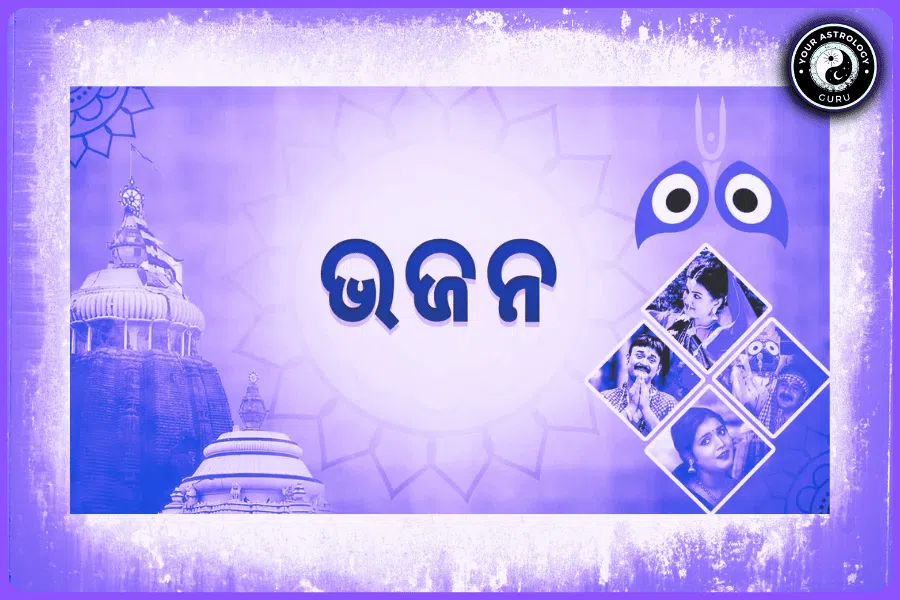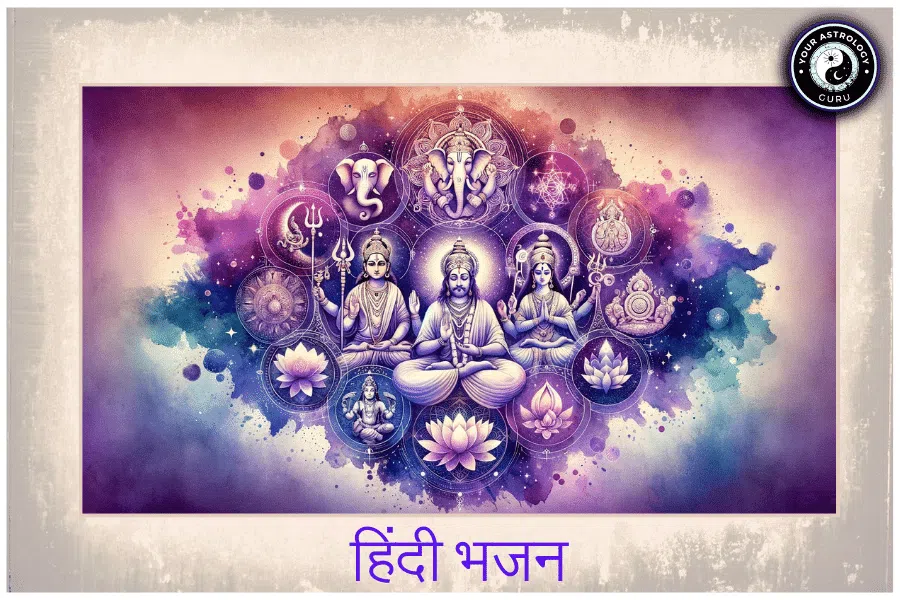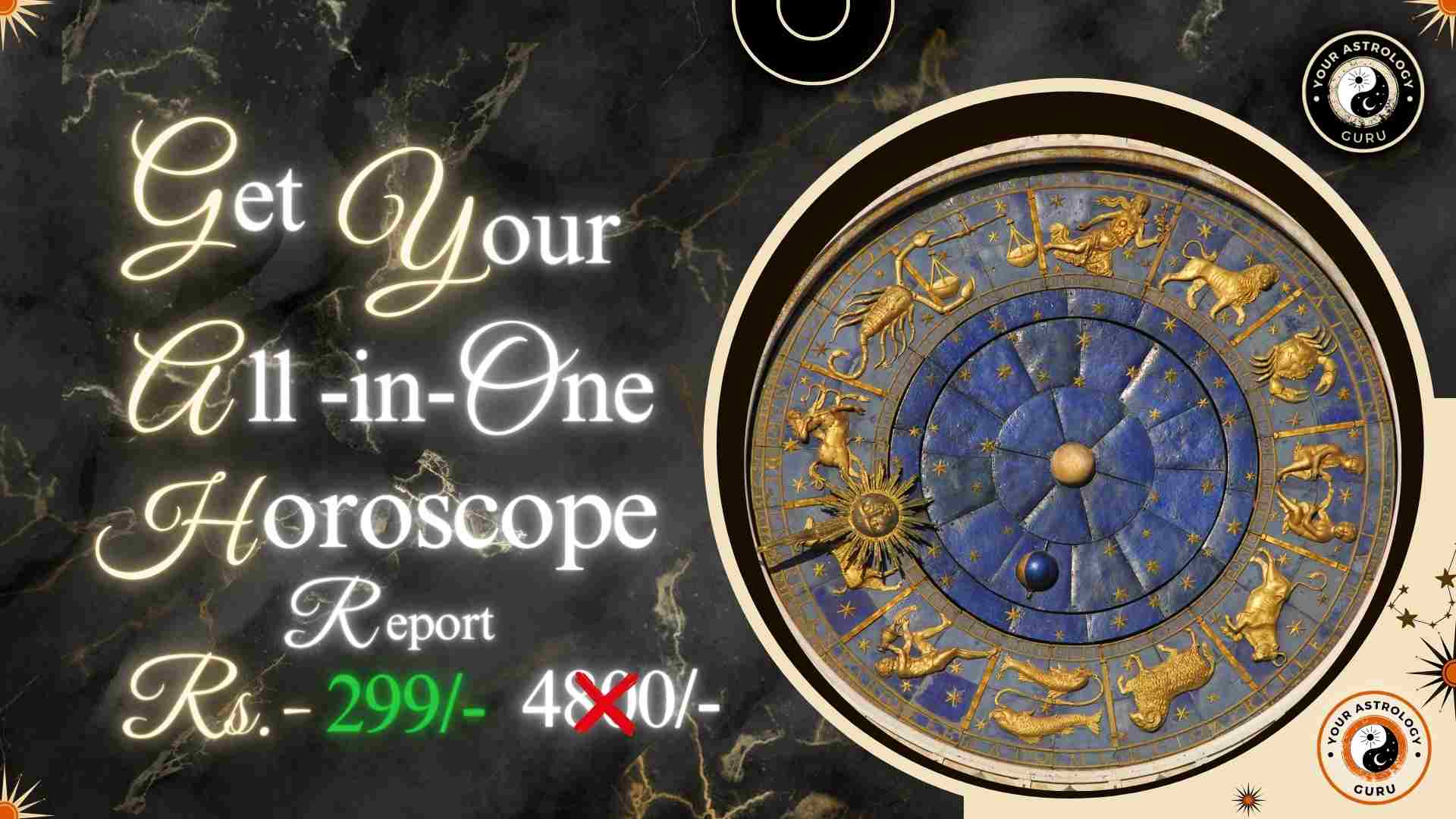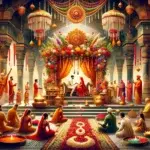The Vishnu Puran is one of the eighteen Mahapuranas, a genre of ancient Indian texts that are considered sacred in Hinduism. It is a significant scripture that narrates the stories and teachings associated with Lord Vishnu, one of the principal deities in Hindu mythology. The Vishnu Puran is believed to have been composed by sage Parashara, who was the father of Vyasa, the author of the Mahabharata.
In Hindu mythology, Lord Vishnu is regarded as the preserver and protector of the universe. He is one of the Trimurti, along with Brahma, the creator, and Shiva, the destroyer. Vishnu is depicted as having a blue complexion and four arms, holding a conch shell, a discus, a mace, and a lotus flower. He is often portrayed reclining on the serpent Shesha in the cosmic ocean.
Table of Contents
The Creation of the Universe: How Vishnu Emerged as the Supreme Being
According to the Vishnu Puran, before the creation of the universe, there was only darkness and water. Lord Vishnu emerged from this primordial state as a lotus flower bloomed from his navel. From this lotus flower, Brahma, the creator, was born. Brahma then went on to create the universe and all living beings.
Vishnu’s emergence as the supreme being can be understood in terms of his role as the preserver of the universe. While Brahma creates and Shiva destroys, it is Vishnu who ensures that balance is maintained in the cosmos. He intervenes whenever there is a threat to dharma (righteousness) and restores order.
The Ten Avatars of Vishnu: From Matsya to Kalki
One of the most well-known aspects of Lord Vishnu is his ten avatars, or incarnations, which he takes to restore dharma and protect the world from evil forces. The ten avatars are Matsya (the fish), Kurma (the tortoise), Varaha (the boar), Narasimha (the half-man, half-lion), Vamana (the dwarf), Parashurama (the warrior with an axe), Rama (the prince of Ayodhya), Krishna (the cowherd prince), Buddha (the enlightened one), and Kalki (the future avatar).
Each avatar has a specific purpose and role in preserving dharma. For example, Rama’s avatar was to defeat the demon king Ravana and restore righteousness, while Krishna’s avatar was to enlighten the world with his teachings in the Bhagavad Gita. The avatars of Vishnu are not only revered for their heroic deeds but also for the moral and spiritual lessons they impart.
The Story of Prahlad: How Vishnu Saved His Devotee from the Clutches of Evil
The story of Prahlad is a prominent tale in Hindu mythology that highlights the power of devotion and the protection offered by Lord Vishnu. Prahlad was the son of the demon king Hiranyakashipu, who despised Vishnu and sought to eliminate him from existence. Despite his father’s hatred for Vishnu, Prahlad remained devoted to the deity.
Hiranyakashipu tried various means to kill Prahlad, including poisoning him, throwing him off a cliff, and even setting him on fire. However, each time, Vishnu intervened and saved Prahlad from harm. In the end, Vishnu appeared in his Narasimha avatar, a half-man, half-lion form, and killed Hiranyakashipu, thus freeing Prahlad from his father’s tyranny.
This story serves as a reminder of the power of faith and devotion, as well as the protection offered by Lord Vishnu to his devotees. It also emphasizes the triumph of good over evil and the importance of upholding dharma.
The Battle of Kurukshetra: How Vishnu Guided Arjuna to Victory
The Mahabharata, one of the longest epic poems in the world, tells the story of the great battle of Kurukshetra between the Pandavas and the Kauravas. Lord Krishna, an avatar of Vishnu, played a pivotal role in this battle by guiding Arjuna, one of the Pandava princes, to victory.
Before the battle began, Arjuna was filled with doubt and despair. He saw his relatives and loved ones on both sides of the battlefield and was overcome with grief at the thought of fighting against them. In this moment of crisis, Krishna imparted his divine wisdom to Arjuna through the Bhagavad Gita, a sacred text that contains profound philosophical teachings.
Krishna explained to Arjuna that it was his duty as a warrior to fight for righteousness and uphold dharma. He taught him about the nature of the soul, the impermanence of life, and the importance of selfless action. With Krishna’s guidance, Arjuna found clarity and determination, and he fought bravely in the battle, ultimately leading the Pandavas to victory.
The Story of Rama: How Vishnu Incarnated as a Human to Restore Dharma
The story of Rama is another significant tale in Hindu mythology that showcases Lord Vishnu’s incarnation as a human being. Rama is considered to be an ideal king and a paragon of virtue. His story is told in the epic poem Ramayana, which narrates his journey to rescue his wife Sita from the demon king Ravana.
Rama’s exile, his encounters with various characters such as Hanuman and Sugriva, and his eventual victory over Ravana are all part of a larger narrative that emphasizes the importance of righteousness and the triumph of good over evil. Rama’s unwavering devotion to dharma and his adherence to his duties as a prince and later as a king make him an exemplary figure in Hindu mythology.
Vishnu’s incarnation as Rama serves as a reminder that even gods can take on human form to fulfill their divine purpose. It also highlights the idea that dharma can be upheld in any circumstance, regardless of one’s status or position in society.
The Story of Krishna: How Vishnu Enlightened the World with His Teachings
The life of Krishna, another avatar of Vishnu, is filled with fascinating stories and teachings that have had a profound impact on Hindu philosophy and spirituality. Krishna is revered as a divine figure who played multiple roles, including that of a cowherd, a prince, a warrior, and a philosopher.
Krishna’s teachings are encapsulated in the Bhagavad Gita, which is considered one of the most important texts in Hinduism. In the Bhagavad Gita, Krishna imparts spiritual wisdom to Arjuna on the battlefield of Kurukshetra. He discusses various philosophical concepts such as karma yoga (the path of selfless action), bhakti yoga (the path of devotion), and jnana yoga (the path of knowledge).
Krishna’s teachings emphasize the importance of performing one’s duties without attachment to the results, surrendering to a higher power, and seeking self-realization through knowledge and devotion. His message resonates with people from all walks of life and continues to inspire millions around the world.
The Churning of the Ocean: How Vishnu Played a Vital Role in the Creation of the World
The story of the churning of the ocean, also known as Samudra Manthan, is a fascinating tale that highlights Vishnu’s role in the creation of the world. According to Hindu mythology, the gods and demons once joined forces to churn the cosmic ocean in search of the nectar of immortality.
During the churning process, various divine and mythical beings emerged from the ocean, including Kamadhenu (the wish-fulfilling cow), Ucchaishravas (the celestial horse), and Airavata (the white elephant). However, the most significant outcome of the churning was the appearance of several precious objects and beings, including Lakshmi, the goddess of wealth and prosperity.
Vishnu played a vital role in this cosmic event by assuming the form of a giant turtle, Kurma, and supporting Mount Mandara on his back as a pivot for churning. His presence ensured that the churning process was successful and that both gods and demons could benefit from its results.
The Story of Bali: How Vishnu Outwitted the Demon King to Restore Balance in the Universe
The story of Bali is another tale that showcases Vishnu’s wisdom and his ability to restore balance in the universe. Bali was a powerful demon king who had gained control over all three worlds – heaven, earth, and the netherworld. His reign threatened to disrupt the cosmic order, as he used his power for selfish purposes.
To restore balance, Vishnu took on the form of Vamana, a dwarf Brahmin. He approached Bali and requested three steps of land as a donation. Bali agreed without hesitation, underestimating Vamana’s true identity. However, as soon as Bali granted his request, Vamana grew in size and covered the entire universe with his first two steps.
With no place left for his third step, Bali offered his own head for Vamana to place his foot. Vishnu accepted this gesture and pushed Bali into the netherworld, thus restoring balance and dharma in the universe. Bali’s selflessness and surrender to Vishnu’s will were seen as acts of great virtue, and he was granted a place in the netherworld as its ruler.
The Destruction of the World: How Vishnu Will Bring an End to the Kali Yuga
According to Hindu cosmology, time is cyclical, consisting of four yugas or ages – Satya Yuga, Treta Yuga, Dvapara Yuga, and Kali Yuga. The Kali Yuga is considered to be the darkest and most turbulent age, characterized by moral decline and spiritual ignorance. It is believed that we are currently living in the Kali Yuga.
However, Hindu mythology also states that Lord Vishnu will incarnate as Kalki at the end of the Kali Yuga to restore balance and usher in a new age of righteousness. Kalki is depicted as a warrior riding a white horse, wielding a sword. He will come to rid the world of evil and establish a new era of peace and harmony.
The concept of Kalki’s arrival serves as a reminder that even in the darkest times, there is hope for renewal and transformation. It encourages individuals to strive for righteousness and to have faith in the ultimate victory of good over evil.
The Importance of Vishnu Puran in Understanding Hindu Mythology and Philosophy
The Vishnu Puran is a rich source of mythological stories, teachings, and philosophical insights that provide valuable insights into Hindu mythology and philosophy. It offers a comprehensive understanding of Lord Vishnu’s role as the preserver of the universe and his various avatars.
The stories of Prahlad, Rama, Krishna, and others highlight the importance of devotion, righteousness, and the pursuit of dharma. They serve as moral and spiritual guides, inspiring individuals to lead virtuous lives and seek self-realization.
The Vishnu Puran also sheds light on the cyclical nature of time and the concept of cosmic balance. It emphasizes the need to uphold dharma and the belief that ultimately, good will triumph over evil.
In conclusion, the Vishnu Puran is a treasure trove of wisdom and knowledge that continues to be revered by millions of Hindus around the world. It offers valuable insights into Hindu mythology and philosophy, providing guidance for individuals seeking spiritual growth and enlightenment.












